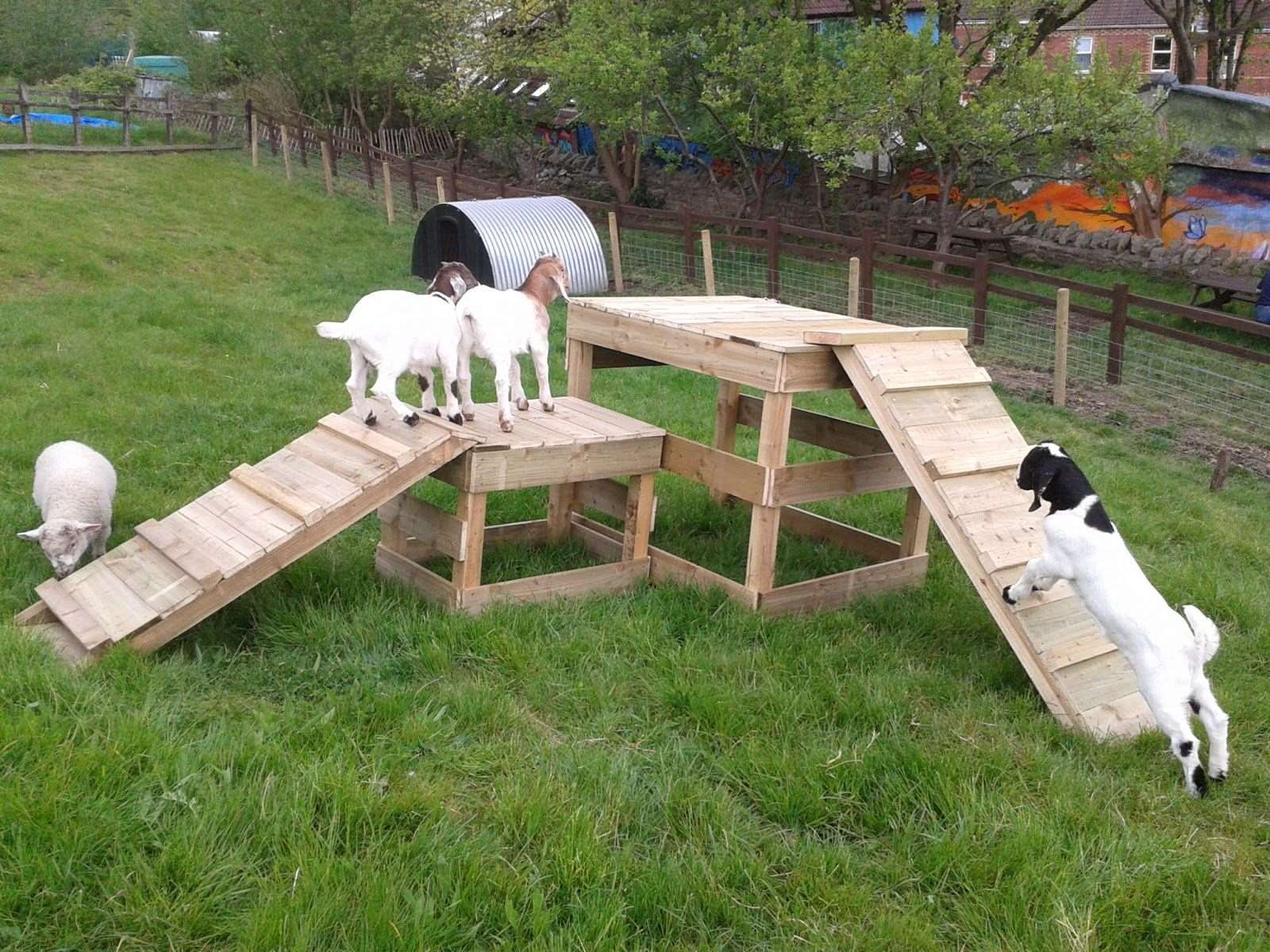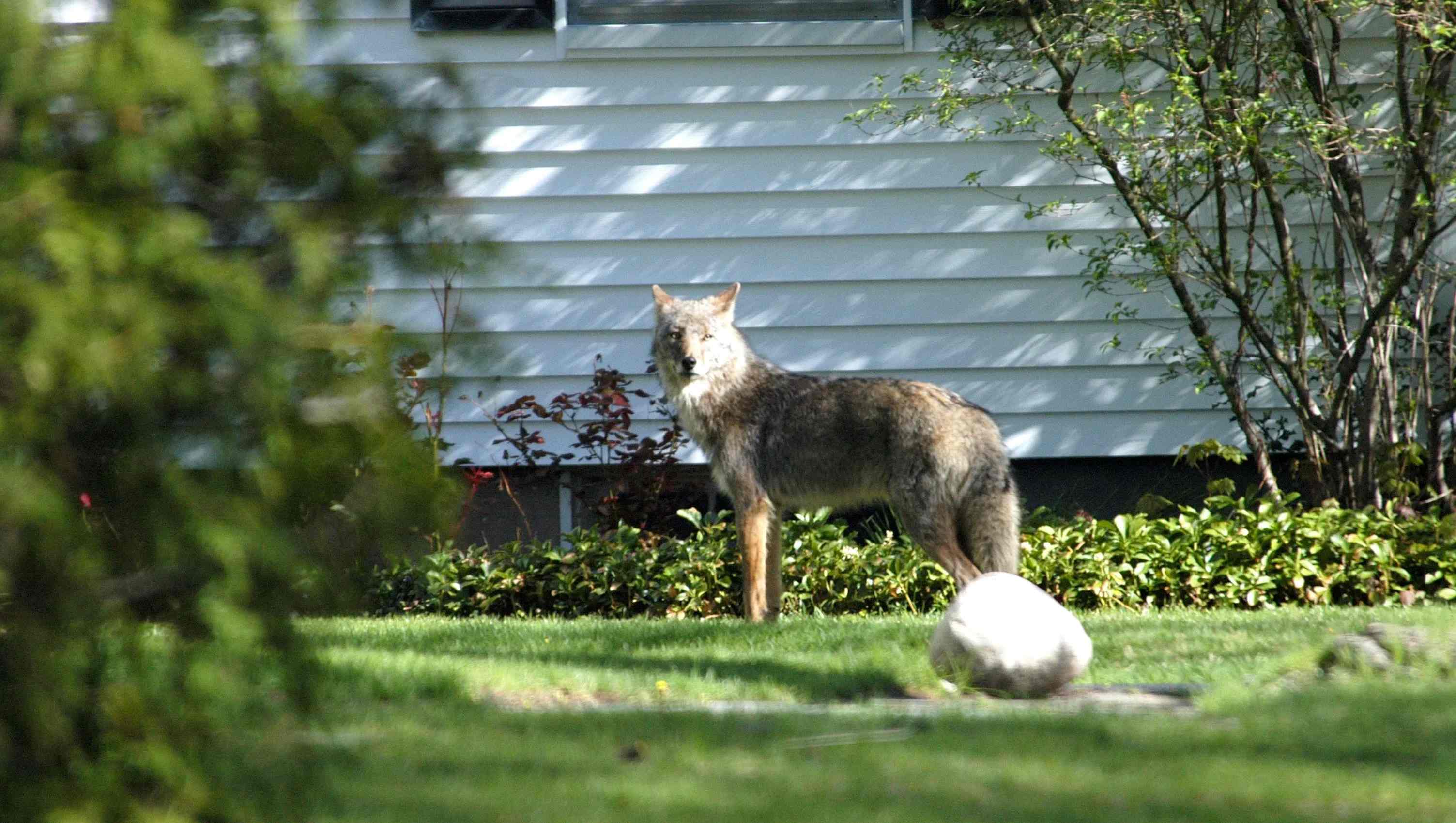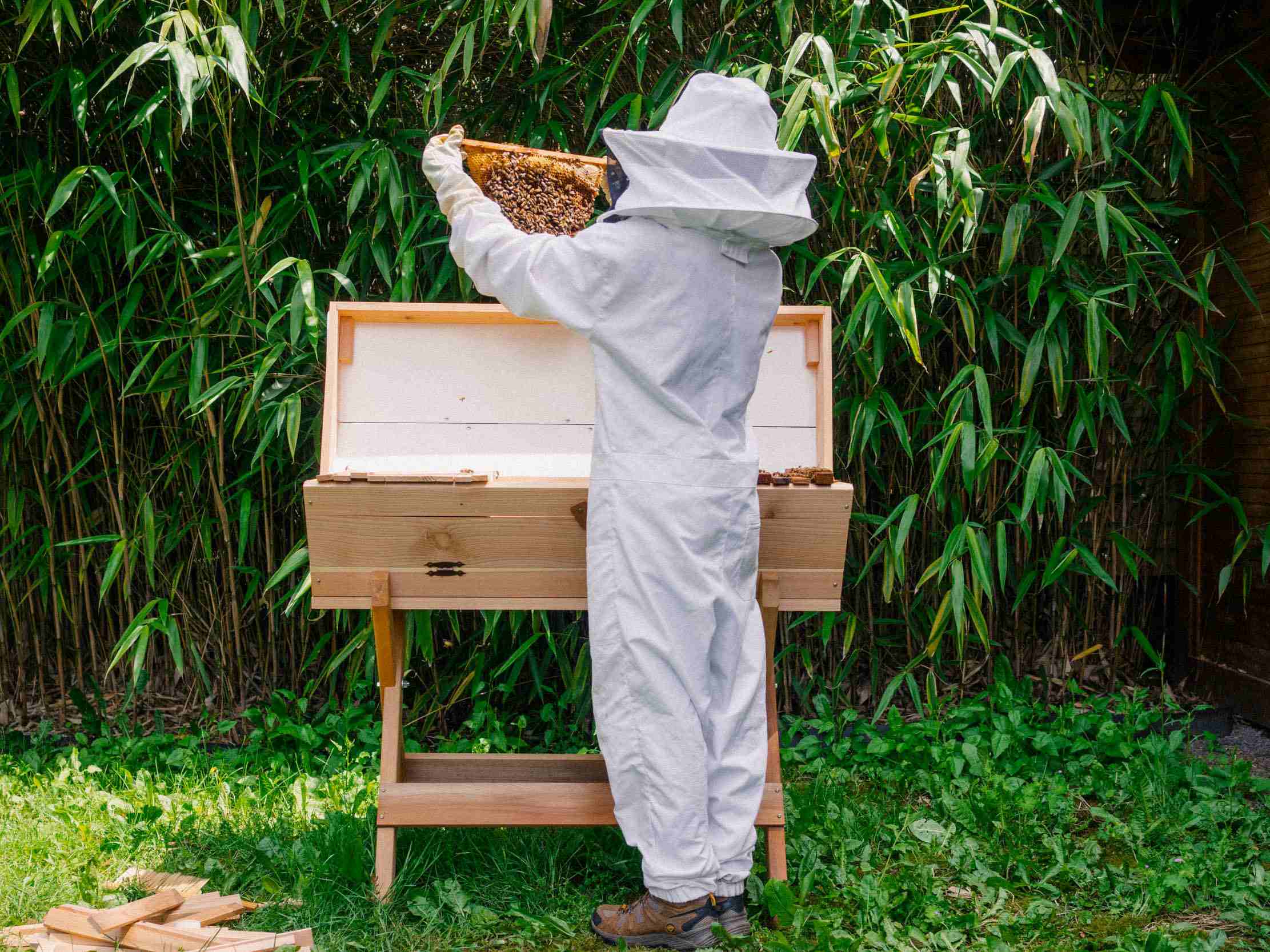Home>Gardening Tips and Tricks>Eco-Friendly Gardening>How To Raise A Goat In Your Backyard


Eco-Friendly Gardening
How To Raise A Goat In Your Backyard
Modified: January 22, 2024
Learn how to raise a goat in your backyard with eco-friendly gardening methods to create a sustainable and rewarding experience.
(Many of the links in this article redirect to a specific reviewed product. Your purchase of these products through affiliate links helps to generate commission for Chicagolandgardening.com, at no extra cost. Learn more)
Table of Contents
- Introduction
- Benefits of Raising Goats in Your Backyard
- Choosing the Right Breed of Goats
- Preparing the Backyard for Goats
- Building a Suitable Shelter for Goats
- Proper Fencing for Goat Enclosures
- Feeding and Nutrition Requirements for Goats
- Providing Clean Water for Goats
- Health Care and Regular Maintenance for Goats
- Training and Socializing Your Backyard Goats
- Managing Waste and Odor Control
- Potential Challenges and Troubleshooting
- Conclusion
Introduction
Welcome to the world of eco-friendly gardening! In today’s fast-paced and concrete-filled world, many people are embracing the idea of transforming their backyards into sustainable and eco-friendly havens. One way to achieve this is by raising goats in your backyard. Not only are goats incredibly adorable and friendly creatures, but they also offer a multitude of benefits for your garden and the environment as a whole.
Goats are natural weed eaters and can help to control unwanted vegetation on your property. By allowing them to roam and graze in your backyard, you can reduce the need for chemical herbicides and minimize the impact on the ecosystem. Additionally, goats produce nutrient-rich manure that can be used as an organic fertilizer for your plants, promoting healthy growth and reducing the reliance on synthetic fertilizers.
Another advantage of raising goats is their ability to provide a source of fresh and sustainable food. Goat milk is highly nutritious and can be used in various dairy products such as cheese, yogurt, and soap. Furthermore, goat meat is lean, flavorful, and a great alternative to traditional meat sources, making it a popular choice for those who are conscious of their environmental impact.
Raising goats in your backyard not only benefits your garden and provides a sustainable food source but also offers numerous educational opportunities for children and adults alike. Learning about animal husbandry, sustainable farming practices, and connecting with nature are valuable experiences that can be gained through the care and management of goats.
In this comprehensive guide, we will explore the various aspects of raising goats in your backyard, from choosing the right breed to providing proper care and maintaining a healthy environment. So, grab your gardening gloves and let’s dive into the world of eco-friendly goat keeping!
Benefits of Raising Goats in Your Backyard
Raising goats in your backyard offers a plethora of benefits that go beyond just having adorable and friendly animals in your midst. Here are some of the key advantages:
- Sustainable Weed Control: Goats are natural weed eaters and excel at clearing unwanted vegetation. By allowing them to graze in your backyard, you can significantly reduce the use of chemical herbicides, minimizing harm to the environment and promoting a more sustainable approach to gardening.
- Organic Fertilization: Goats produce nutrient-rich manure that is an excellent organic fertilizer for your garden. Their droppings are packed with nitrogen, phosphorus, and potassium, essential nutrients that promote healthy plant growth. By integrating goat manure into your gardening practices, you can reduce the reliance on synthetic fertilizers.
- Sustainable Food Source: Goat milk and meat are highly nutritious and can provide a sustainable food source for your family. Goat milk is rich in vitamins, minerals, and healthy fats, making it a popular choice for those with lactose intolerance. Goat meat is lean, flavorful, and has a lower environmental impact compared to traditional livestock sources.
- Reduced Carbon Footprint: Raising goats in your backyard can help reduce your carbon footprint. By producing your own food and minimizing the reliance on commercially farmed products, you contribute to the reduction of transportation emissions and support a more sustainable food system.
- Sustainable Land Management: Goats can help improve the health and fertility of your soil. As they graze, their hooves till and aerate the ground, promoting better water absorption and nutrient distribution. Their constant movement also helps to control soil erosion, making them valuable partners in maintaining a healthy backyard ecosystem.
- Educational Opportunities: Raising goats in your backyard provides invaluable learning experiences for both children and adults. It allows you to teach important lessons about animal care, sustainable farming practices, and the interconnections between humans and nature. It fosters a deeper appreciation for the environment and encourages a more mindful approach to food production.
These are just a few of the many benefits of raising goats in your backyard. From sustainable weed control to organic fertilization and enhanced educational opportunities, they offer a unique and rewarding experience for eco-conscious gardeners. So, why not bring the charm and functionality of goats to your backyard and embark on a truly sustainable gardening journey?
Choosing the Right Breed of Goats
When it comes to raising goats in your backyard, selecting the right breed is crucial for the success of your endeavor. Each breed has its own unique characteristics and qualities, so it’s important to consider your specific needs and preferences. Here are some factors to keep in mind when choosing the right breed:
- Purpose: Determine the primary purpose of raising goats in your backyard. Are you looking for milk production? Meat? Fiber? Certain breeds are specifically bred for these purposes. For example, if you want milk, Nigerian Dwarf or Nubian goats are excellent choices, while Boer goats are renowned for their meat production.
- Size: Consider the size of your backyard and the amount of space you have available. Some breeds, like Pygmy goats, are smaller and require less space to thrive, making them suitable for smaller properties. Larger breeds, such as Saanen or Alpine goats, may require more room to roam.
- Climate Adaptability: Take into account the climatic conditions of your area. Certain breeds are better suited for hot climates, while others are more cold-hardy. For example, Spanish goats are known for their ability to thrive in hot, arid regions, whereas Oberhasli goats are more adaptable to colder climates.
- Temperament: Consider the temperament and behavior of the breed. Some goats are more docile and friendly, making them suitable for families with children. Other breeds may be more independent or feisty and require experienced handlers.
- Availability: Research the availability of the breed in your area. It’s generally more convenient to choose a breed that is locally accessible, as it ensures better support, ease of purchase, and access to veterinary care.
Ultimately, the right breed for your backyard goats will depend on your personal preferences, the available resources, and the specific goals you have in mind. Conduct thorough research, visit local goat breeders, and consult with experienced goat owners or agricultural extension offices to gain insights into the different breeds and their characteristics. By carefully considering these factors, you can choose a breed of goat that meets your needs and aligns with your commitment to eco-friendly gardening.
Preparing the Backyard for Goats
Before bringing goats into your backyard, it’s important to prepare the space to ensure their safety, comfort, and well-being. Here are some essential steps to take when getting your backyard ready for goats:
- Secure Boundaries: Goats are naturally curious and mischievous creatures that love to explore and taste everything. Ensure that your backyard is properly fenced to prevent them from escaping and potential encounters with predators. Choose fencing that is strong, durable, and at least 4 to 5 feet tall, with no gaps or loose wires that goats could get stuck in.
- Clear Hazards: Goats are notorious for squeezing into tight spaces or nibbling on toxic plants. Remove any hazardous or poisonous plants from the backyard and secure or protect any equipment, wires, or tools that could pose a risk to the goats’ safety.
- Create Shelter: Provide a suitable shelter for the goats to protect them from extreme weather conditions such as heat, cold, wind, and rain. A sturdy, well-ventilated structure with adequate space for all the goats is essential. Bedding material such as straw or wood shavings should also be provided for their comfort.
- Provide Adequate Space: Ensure that your backyard has enough space to accommodate the number of goats you plan to raise. As a general rule, allocate at least 200 to 300 square feet of space per goat to allow for movement, grazing, and exercise.
- Assess Grazing Area: Evaluate the grazing area in your backyard. Ensure that it is free from toxic plants and chemicals. Consider planting forage crops, such as clover or alfalfa, to provide additional grazing options and ensure a varied diet for the goats.
- Water Source: Provide a clean and accessible water source for the goats. Make sure they have constant access to fresh water that is free from contaminants. Preferably, use a trough or automatic waterer that can be easily refilled and cleaned regularly.
- Create Shade: Goats are sensitive to extreme heat and require shade to cool off. Planting trees or setting up shade structures in the backyard can provide them with relief from the sun’s rays.
By taking the time to prepare your backyard adequately, you create a safe and comfortable environment for your goats. Remember that the specific requirements may vary depending on the number of goats you plan to raise and the local climate. Consulting with experienced goat owners or agricultural extension offices can provide valuable insights and guidance on backyard preparations specific to your region.
Building a Suitable Shelter for Goats
Providing a suitable shelter for your goats is essential for their well-being and comfort. A well-designed and properly constructed shelter will protect them from extreme weather conditions and ensure they have a secure and cozy space to rest. Here are some key aspects to consider when building a shelter for your backyard goats:
- Size: The size of the shelter will depend on the number of goats you plan to house. As a general guideline, allocate approximately 15-20 square feet per goat. This will provide enough space for them to move around comfortably.
- Materials: Choose durable and weather-resistant materials for the construction of the shelter. Common options include wood, metal, or a combination of both. Ensure that the materials are non-toxic and free from any potential hazards that goats may chew on.
- Roof: A sturdy roof is crucial to protect goats from rain, snow, and excessive sunlight. It should be slanted to allow for proper drainage and prevent water accumulation. Consider using corrugated metal or strong waterproof materials to ensure longevity.
- Ventilation: Proper ventilation is essential to maintain good air quality inside the shelter. Install windows or vents that can be opened or closed as needed, allowing fresh air to circulate and preventing the build-up of moisture or odors.
- Bedding: Provide comfortable bedding inside the shelter to keep the goats warm and cozy. Straw, wood shavings, or dry grass can be used as bedding material. Regularly clean and replace the bedding to maintain cleanliness and reduce the risk of disease transmission.
- Security: Ensure that the shelter is secure and protected from predators. Use sturdy doors and windows with strong locks to prevent unauthorized access. Also, inspect the shelter regularly for any potential openings or weak spots that could compromise the safety of your goats.
- Layout: Design the shelter with separate areas for feeding, resting, and kidding (if you plan to breed goats). This will help maintain cleanliness and provide the goats with organized and distinct spaces for different activities.
- Accessibility: Make sure the shelter is easily accessible for cleaning, feeding, and veterinary care. Place it in a convenient location within your backyard, taking into consideration factors such as water source proximity and ease of access for both goats and caretakers.
Consulting with experienced goat farmers or agricultural extension offices can provide valuable insights and guidance on shelter design and construction specific to your region. Additionally, incorporating natural elements such as shade trees or windbreaks around the shelter can create a more comfortable and natural environment for your goats. By investing time and effort in building a suitable shelter, you are ensuring the health, safety, and well-being of your backyard goats.
Proper Fencing for Goat Enclosures
Proper fencing is crucial when it comes to keeping your goats safe, contained, and secure within their designated area. Goats are known for their curiosity and agility, making it important to have a fencing system that can withstand their attempts to escape. Here are some key considerations for establishing proper fencing for goat enclosures:
- Fence Height: Goats are natural climbers and jumpers, so it’s essential to have a fence that is tall enough to prevent them from escaping. A fence height of at least 4 to 5 feet is recommended as a general standard. However, taller fences may be required for larger or more athletic breeds.
- Fence Strength: Goats have a tendency to lean, rub, or even try to push through fences. Ensure that the fencing materials and structure are strong and sturdy enough to withstand their strength. Choose materials such as heavy-gauge welded wire or woven wire that can withstand the pressure and keep the goats securely contained.
- No Gaps: Goats are experts at squeezing through small spaces. Make sure there are no gaps or openings in the fence where goats can escape or get stuck. Regularly inspect the fence for any loose wires or weak spots that may need to be repaired or reinforced.
- Electric Fence: Using an electric fence in addition to traditional fencing can be an effective deterrent for goats. The electric shock provides a psychological barrier that discourages them from trying to escape or challenge the fence. Electric fences should be installed according to manufacturer guidelines and local regulations.
- Burrowing Prevention: Goats are talented diggers and can try to burrow underneath fences. To prevent this, bury the fence at least 6 to 12 inches below the ground or install a wire mesh apron that extends outward. This will deter the goats from digging and keep them within the enclosure.
- Goat-Proof Gates: Ensure that all gates are secure and goat-proof. Install sturdy gate hinges, latches, and locks to prevent goats from opening them accidentally. Regularly inspect gates for any damage or wear and promptly repair or replace any faulty components.
- Visually Distinguishable Fence: Goats are intelligent animals and can quickly learn to recognize the boundaries of their enclosure. Consider adding a visual element to the fence, such as brightly colored tape, flags, or ornaments. This can help reinforce the goats’ understanding of the boundaries and discourage them from testing the fence.
It’s important to note that the specific fencing requirements may vary depending on the breed, size, and behavior of your goats, as well as the local regulations in your area. Consulting with experienced goat owners or agricultural extension offices can provide valuable guidance on the most suitable fencing options for your goat enclosure. Remember, investing in proper fencing not only keeps your goats safe but also gives you peace of mind knowing that they are secure within their designated area.
Feeding and Nutrition Requirements for Goats
Providing proper nutrition is crucial for the overall health and well-being of your backyard goats. Goats have unique dietary needs, and understanding their nutritional requirements is essential to ensure their growth, productivity, and longevity. Here are some key considerations for feeding and meeting the nutritional needs of your goats:
- Forage: Goats primarily thrive on forage, which includes grasses, hay, shrubs, and browse. They are natural browsers and benefit from access to a variety of plant materials. Ensure that there is an ample supply of good-quality forage available for your goats to graze on.
- Hay: High-quality hay is an essential part of the goat’s diet, especially during colder months when grazing is limited. Choose hay that is free from mold, dust, or contaminants. Feeding hay in a rack or trough helps to reduce wastage and keeps it clean.
- Grains and Concentrates: Grain and concentrate feeds can be given to supplement the nutritional requirements of goats, especially during periods of high energy demand, such as breeding or lactation. The type and amount of grains and concentrates should be determined based on the individual goat’s specific needs, age, and production stage.
- Minerals and Vitamins: Provide a mineral supplement that meets the specific needs of goats. Goats require minerals such as calcium, phosphorus, copper, selenium, and salt. Consult with a veterinarian or a nutritionist to determine the appropriate mineral mix for your goats.
- Water: Access to clean and fresh water is essential for goats. Ensure that there is a constant supply of water available to them. Goats can be picky drinkers, so clean the water trough regularly to prevent the buildup of debris or contaminants.
- Feeding Schedule: Establish a feeding schedule that suits the specific needs of your goats. Goats generally benefit from being fed small meals multiple times a day rather than one large meal. This allows for better digestion and nutrient absorption.
- Observation and Adjustment: Regularly observe your goats’ body condition and behavior to gauge their nutritional needs. Adjust the feeding regimen accordingly to maintain their health and prevent over- or under-nutrition.
- Pasture Rotation: If you have access to pasture, practice rotational grazing to allow the vegetation to recover and provide fresh forage for your goats. Limit the time spent on each grazing area to prevent overgrazing and ensure a continuous supply of nutritious forage.
It is important to note that the nutritional needs of goats can vary depending on factors such as age, breed, production stage, and overall health. Consulting with a veterinarian or a professional animal nutritionist can provide valuable guidance on developing a well-balanced diet specific to your goats. By providing proper nutrition, you are ensuring the health, productivity, and longevity of your backyard goats.
Providing Clean Water for Goats
Ensuring that your goats have access to clean and fresh water is essential for their overall health and well-being. Water plays a critical role in digestion, nutrient absorption, temperature regulation, and overall bodily functions. Here are some important considerations when providing clean water for your goats:
- Constant Access: Goats should have continuous access to water throughout the day. Ensure that a clean and reliable water source is available at all times, especially during hot weather or periods of increased activity.
- Clean and Fresh: Regularly check and clean the water trough or container to prevent the accumulation of debris, algae, or other contaminants. Discard any stagnant or dirty water and refill with fresh water to maintain its cleanliness.
- Protection from Contamination: Position the water container in a location that is protected from contamination. Keep it away from areas with potential sources of pollutants, such as chemicals, fertilizer runoff, or soiled bedding.
- Size and Accessibility: Ensure that the water container is large enough to accommodate the number of goats you have. It should be easily accessible and at an appropriate height for goats to reach without difficulty or risk of injury.
- Preventing Freezing: In colder climates, take measures to prevent the water from freezing during winter. Use heated water buckets or troughs, insulate the water container, or regularly replace with fresh water to prevent freezing and ensure your goats stay hydrated.
- Water Quality Testing: Periodically test the quality of water to ensure it meets safe drinking standards for goats. Test for pH levels and the presence of contaminants, such as bacteria, chemicals, or excessive mineral content, which may have adverse effects on goat health.
- Multiple Water Sources: If you have a large number of goats or a large grazing area, consider providing multiple water sources to ensure all goats have easy access to water without overcrowding or competing for access.
Remember that goats are selective drinkers and prefer clean water. If possible, offer your goats water from sources they are familiar with, such as a well or natural spring, as this can encourage them to drink more readily.
By ensuring that your goats have access to clean and fresh water, you are promoting good hydration, supporting proper digestion and overall health, and helping to prevent common health issues related to dehydration or contaminated water sources.
Health Care and Regular Maintenance for Goats
Proper health care and regular maintenance are vital to keeping your backyard goats happy and healthy. Implementing a proactive approach to their well-being will minimize the risk of illness and ensure they thrive in your care. Here are some key considerations for maintaining the health and wellness of your goats:
- Veterinary Care: Establish a relationship with a veterinarian who has experience in treating goats. Schedule regular check-ups and vaccinations to prevent common diseases and illnesses. Consult with your veterinarian to develop a comprehensive health care plan tailored to your goats’ specific needs.
- Parasite Control: Goats are prone to internal and external parasites, such as worms and mites. Develop a parasite control program in collaboration with your veterinarian. Monitor goats regularly for signs of infestation, and administer deworming medication or appropriate treatment as directed.
- Vaccinations: Administer necessary vaccinations as recommended by your veterinarian to protect against common goat diseases, such as tetanus, enterotoxemia, and pneumonia. Keep an accurate record of vaccinations and boosters to ensure timely administration.
- Hoof Trimming: Regularly trim the hooves of your goats to prevent overgrowth, hoof diseases, and discomfort. Familiarize yourself with proper hoof trimming techniques or seek the help of a professional hoof trimmer to ensure this task is done safely and effectively.
- Proper Nutrition: Provide a balanced and appropriate diet tailored to the specific nutritional needs of your goats. Monitor their body condition regularly and adjust their feeding regimen as necessary to ensure they maintain a healthy weight.
- Observation and Early Detection: Regularly observe your goats for any changes in behavior, appetite, or appearance. Early detection of health issues is crucial for prompt intervention and treatment. Monitor for signs of lameness, respiratory problems, diarrhea, or abnormal growths.
- Safe Environment: Ensure that your backyard is free from potential hazards that may harm your goats. Remove toxic plants, dangerous objects, and secure any loose wires or equipment that could potentially pose a risk.
- Sanitation and Cleanliness: Maintain a clean and sanitary environment for your goats. Regularly clean their shelter, water containers, and feeding equipment. Properly dispose of manure to prevent the buildup of parasites and maintain good hygiene.
- Socializing and Exercise: Provide opportunities for your goats to socialize and exercise. Interaction with other goats and access to a spacious outdoor area for grazing and exploration can promote their mental and physical well-being.
Remember, each goat is unique, and their health care needs may vary. Regularly consult with your veterinarian and stay informed about current best practices for goat health care. By prioritizing their health and well-being through proper care, you will ensure that your backyard goats lead happy and thriving lives.
Training and Socializing Your Backyard Goats
Training and socializing your backyard goats are important aspects of their care that contribute to their overall well-being and enhance your bond with them. By establishing positive interactions and behaviors, you can ensure that your goats are well-behaved, manageable, and enjoyable to be around. Here are some key considerations for training and socializing your goats:
- Early Handling: Start handling your goats from a young age to familiarize them with human contact. This helps build trust and establishes positive associations with human interaction.
- Positive Reinforcement: Use positive reinforcement techniques, such as rewards-based training, to encourage desired behaviors. Rewarding goats with treats, praise, or petting when they obey commands or display good behavior reinforces positive associations and increases their willingness to comply.
- Basic Commands: Teach your goats basic commands, such as “come,” “stop,” or “stand.” Consistent repetition and reinforcement will help them understand and respond to these commands, making it easier to handle and manage them.
- Lead Training: Introduce your goats to lead training gradually. Begin by attaching a lightweight lead and allowing them to explore while gently guiding their movements. With time and patience, they will learn to walk calmly on a lead.
- Socialization: Expose your goats to various environments, sights, and sounds to promote socialization. Introduce them to different animals, people, and experiences from an early age to help them become well-adjusted and less fearful of new situations.
- Endurance Training: Gradually increase the duration and intensity of exercise for your goats. Encourage them to walk, climb, or engage in playful activities to build endurance, strengthen their muscles, and provide mental stimulation.
- Interacting with Other Animals: Expose your goats to other friendly and well-behaved animals, such as dogs or other goats. This encourages healthy social interaction and helps them develop appropriate behavior when around other animals.
- Positive Human Interaction: Spend time with your goats regularly, engaging in gentle petting, scratching, and grooming sessions. This helps them feel comfortable and secure in your presence, strengthening the bond between you.
- Patience and Consistency: Training and socializing goats require patience and consistency. Be patient when teaching new commands or behaviors, repeating exercises as needed. Consistency in your approach and expectations helps them understand and respond better.
- Respect Boundaries: Always respect your goats’ personal space and avoid forcing them into uncomfortable situations. Recognize their individual preferences and boundaries, allowing them to approach you willingly.
Remember, each goat has its own personality and learning pace. Some may be more receptive and quick learners, while others may take more time. Be patient, gentle, and consistent in your training efforts, and always prioritize the well-being and comfort of your goats.
Managing Waste and Odor Control
Effectively managing waste and controlling odor is essential when raising goats in your backyard. Proper waste management not only ensures a clean and hygienic environment for your goats but also minimizes the impact on your neighbors and the surrounding ecosystem. Here are some key strategies for managing waste and controlling odor:
- Designated Manure Area: Allocate a specific area in your backyard where goat manure can be deposited. Regularly clean this area to prevent the build-up of manure and reduce the risk of parasites and odors.
- Composting: Consider composting goat manure along with other organic materials, such as straw or yard waste. Composting not only helps break down the waste but also produces nutrient-rich compost that can be used as a natural fertilizer for your garden or landscaping.
- Bedding Management: Properly manage bedding materials inside the goat shelter. Regularly clean and replace soiled bedding to prevent odor accumulation and maintain a fresh environment for your goats.
- Proper Drainage: Ensure that the goat shelter and the designated manure area have proper drainage systems in place. Good drainage prevents excess moisture accumulation, which can lead to unpleasant odors and unhealthy conditions for your goats.
- Regular Cleaning: Establish a routine for cleaning the goat shelter and the surrounding areas. Regularly remove soiled bedding, sweep away debris, and dispose of waste in a proper manner to maintain cleanliness and minimize odors.
- Use of Lime: Sprinkling agricultural lime in the designated manure area can help control odors by neutralizing ammonia and reducing decomposition rates. Be cautious when using lime and follow packaging instructions for proper application.
- Deep Bedding Method: Consider using the deep bedding method in the goat shelter, where a thick layer of bedding materials gradually accumulates over time. This method promotes natural decomposition, absorbs moisture, and reduces odors, requiring less frequent cleaning.
- Proper Ventilation: Ensure that the goat shelter is well-ventilated to allow for good air circulation and the expulsion of odors. Proper ventilation helps to minimize the concentration of ammonia and stagnant air that can contribute to unpleasant smells.
- Consider Odor Control Products: Some natural, environmentally-friendly odor control products, such as biofilters or odor-neutralizing sprays, can be used in the goat shelter or the designated manure area to help minimize odors. Research and choose products that are safe for use around goats and the environment.
- Good Neighbor Relations: Be considerate of your neighbors when managing waste and controlling odor. Communicate with them, address any concerns they may have, and take proactive measures to minimize any potential nuisances.
By implementing these waste management strategies and odor control practices, you can create a clean and pleasant environment for both your goats and your surrounding community. Remember, proper waste management is not only essential for odor control but also plays a vital role in maintaining the health and hygiene of your backyard goat operation.
Potential Challenges and Troubleshooting
Raising goats in your backyard can be a rewarding and fulfilling experience, but like any endeavor, it comes with its own set of challenges. Understanding and being prepared to troubleshoot these challenges will help you overcome obstacles and ensure the well-being of your goats. Here are some potential challenges you may encounter and tips to address them:
- Escape Attempts: Goats are notorious escape artists. Regularly inspect your fencing for any weaknesses or potential escape routes. Strengthen and repair any areas where goats may attempt to breach or break through.
- Predator Threats: Predators such as coyotes, foxes, or dogs may pose a risk to your goats. Reinforce fencing to prevent access and consider additional measures such as motion-activated lights, guardian animals, or secure overnight housing to protect your goats from potential predators.
- Health Issues: Goats may face various health issues such as parasites, respiratory infections, or hoof problems. Establish a good relationship with a knowledgeable veterinarian who can help diagnose and treat any health concerns that arise. Monitor your goats closely for any signs of illness or distress.
- Feeding Challenges: Balancing and meeting the nutritional needs of your goats can be a challenge. Consult with a veterinarian or an animal nutritionist to develop a proper diet plan specific to your goats’ requirements, ensuring they receive adequate nutrition for their age, breed, and production stage.
- Behavioral Issues: Goats can exhibit stubborn or mischievous behaviors. Consistent and patient training, along with positive reinforcement, can help address behavioral issues. Seek the assistance of a professional trainer or join a goat owners’ community to share experiences and learn from others.
- Noise Concerns: Goats can be vocal animals, especially during breeding season or when seeking attention. Communicate with your neighbors about your goat-keeping plans, address any concerns they may have, and consider ways to minimize noise, such as providing distractions or adjusting living arrangements if necessary.
- Grass and Vegetation Management: While goats are excellent natural weed eaters, they can sometimes eat or damage plants that you would like to preserve. Monitor their grazing areas and protect any plants you wish to keep by fencing them off or utilizing temporary grazing rotations.
- Seasonal Temperature Challenges: Extreme temperatures, whether hot or cold, can impact the health and comfort of your goats. Provide shade, ample ventilation, and access to clean water during hot weather. In colder climates, provide adequate shelter, insulation, and protection from harsh winds.
- Breeding and Reproduction: Breeding and reproduction can bring new challenges. Ensure proper care during kidding, provide a clean and safe environment for newborn kids, and be prepared to address any complications that may arise during the birthing process.
- Legal and Zoning Regulations: Understand and comply with any local regulations or zoning restrictions related to keeping goats in your backyard. Research and obtain any necessary permits or permissions to ensure you are compliant with local laws.
Remember, challenges are a part of the goat-raising journey, and each situation may require its own unique approach. Stay knowledgeable, be proactive, and reach out for support and guidance from experienced goat owners, agricultural extension offices, or local goat clubs. By addressing these challenges head-on, you can ensure a safe and rewarding experience while raising goats in your backyard.
Conclusion
Congratulations! You have embarked on a beautiful journey of eco-friendly gardening by raising goats in your backyard. By incorporating these gentle and intelligent creatures into your sustainable lifestyle, you can reap numerous benefits, not only for your garden but also for the environment and your overall well-being.
Raising goats offers the opportunity to control weeds naturally, reduce dependence on chemicals, and produce organic fertilizer for your plants. Additionally, goats provide a sustainable source of milk or meat, contributing to a more self-sufficient and eco-conscious food system.
Remember to choose the right breed of goats based on your goals for milk production, meat, or fiber. Prepare your backyard by ensuring secure fencing, providing shelter, and creating a safe and comfortable environment for your goats to thrive.
Feeding your goats a balanced diet, providing clean water, and offering proper health care and regular maintenance are vital components of their well-being. Training and socializing your goats enhance your bond with them and create a harmonious relationship.
Managing waste and controlling odor is crucial for maintaining a clean and hygienic environment for your goats and minimizing the impact on your neighbors and the ecosystem. By addressing potential challenges and troubleshooting, you will be well-prepared to overcome obstacles along the way.
Raising goats in your backyard requires dedication, knowledge, and a commitment to sustainable practices. As you embark on this eco-friendly gardening journey, continue learning, seeking advice from experienced goat owners, and embracing the joys that come with nurturing and caring for these wonderful animals.
Enjoy the rewards of a greener and more self-sufficient lifestyle as you witness the positive impact that goats can have on your garden, your community, and the planet as a whole.










